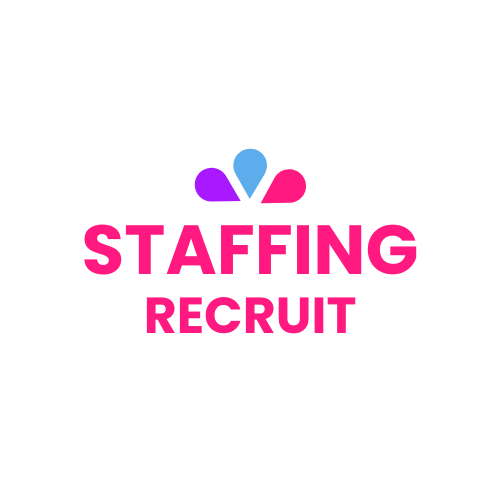Introduction
Pre-video interviews have become a crucial gateway for care providers seeking new opportunities in the healthcare sector. These digital interactions present a unique chance to showcase your skills, compassion, and professionalism before meeting potential employers face-to-face.
Care providers face distinct challenges in video interviews. The need to convey warmth and empathy through a screen can feel daunting. Demonstrating practical skills and sharing patient care experiences while maintaining confidentiality requires careful consideration in a virtual setting.
Key strategies for success include:
- Mastering technical aspects of video platforms
- Creating an environment that reflects professionalism
- Adapting communication style for virtual engagement
- Preparing compelling examples of patient care experiences
The virtual interview landscape demands a blend of traditional interview preparation and digital savvy. By understanding these elements and implementing targeted strategies, care providers can transform the pre-video interview from a potential obstacle into an opportunity to shine.
Understanding Pre-Video Interview Formats
Pre-video interviews come in two distinct formats: live interviews and pre-recorded interviews. Each format presents unique opportunities and considerations for care providers.
Live Video Interviews
- Real-time interaction with the interviewer through platforms like Zoom or Skype
- Direct question-and-answer exchanges
- Opportunity for natural conversation flow and immediate clarification
- Ability to read facial expressions and respond to non-verbal cues
Live interviews closely mirror traditional in-person meetings, allowing candidates to showcase their interpersonal skills and build rapport with interviewers. The real-time nature of these interactions enables care providers to demonstrate essential qualities like active listening, empathy, and quick thinking – crucial skills in healthcare settings.
Real-time communication in live interviews creates authentic moments that help employers assess a candidate’s:
- Problem-solving abilities under pressure
- Communication style with potential colleagues
- Cultural fit within the organisation
- Ability to handle unexpected situations
Pre-Recorded Interviews
- Set questions appear on screen
- Limited time to record responses
- Multiple attempts may be allowed for each answer
- Responses are reviewed by hiring managers at their convenience
Understanding these format differences helps care providers adapt their interview strategies and present themselves effectively in either scenario.
Preparation Strategies for Care Provider Interviews
Thorough preparation sets successful candidates apart in care provider interviews. A deep understanding of your potential employer’s mission and values enables you to craft responses that resonate with their organisational culture.
1. Research Your Potential Employer
- Study the organisation’s website, focusing on their care philosophy
- Read recent news articles or press releases about the facility
- Connect with current employees on professional networks
- Review patient/resident testimonials to understand service quality standards
2. Master the STAR Method
The STAR (Situation, Task, Action, Result) method helps structure compelling responses:
- Situation: Describe the context
- Task: Explain your responsibility
- Action: Detail the steps you took
- Result: Share the positive outcome
3. Common Care Provider Interview Questions
Practice these frequently asked questions:
- “How do you handle difficult patients or residents?”
- “Describe a time you managed a medical emergency”
- “What strategies do you use to maintain patient dignity?”
- “How do you collaborate with healthcare team members?”
- “What motivates you to work in healthcare?”
4. Create a Professional Portfolio
Build a comprehensive portfolio including:
- Copies of certifications and licenses
- Documentation of continuing education
- Reference letters from previous employers
- Examples of care plans you’ve developed
- Records of specialised training
5. Practice Interview Techniques
- Record yourself answering practice questions
- Time your responses (aim for 1-2 minutes per answer)
- Ask a colleague to conduct mock interviews
- Practice maintaining professional composure while discussing challenging scenarios
Remember to align your preparation with specific care provider roles – whether it’s nursing, elderly care, or specialised medical support. Your responses should demonstrate both technical competence and genuine compassion for patient care.
Technical Setup and Environment Considerations for Video Interviews
A successful video interview relies heavily on your technical preparation and environment setup. Creating the right conditions can significantly impact your interview performance and the interviewer’s perception of your professionalism.
Essential Technical Checklist:
- Test your internet speed (minimum 1.5 Mbps for video calls)
- Update your video conferencing software
- Fully charge your device
- Connect headphones to prevent audio feedback
- Position your camera at eye level
- Close unnecessary browser tabs and applications
Creating the Ideal Interview Space:
- Select a quiet room with minimal echo
- Position yourself facing a window or light source
- Ensure your background is clean and professional
- Remove potentially distracting items from view
- Set up proper lighting to eliminate shadows on your face
Professional Camera Setup:
- Frame yourself from chest to head in the camera view
- Maintain 2-3 feet distance from the camera
- Check your camera angle to avoid unflattering views
- Test your video quality in different lighting conditions
Audio Quality Tips:
- Use a dedicated microphone or quality headset
- Test your audio levels before the interview
- Position your microphone 6-12 inches from your mouth
- Minimise background noise by closing windows and doors
- Alert household members about your interview timing
Backup Plans:
- Have a secondary device ready
- Keep your phone charged for audio backup
- Note down the interviewer’s contact information
- Test alternative internet connections (mobile hotspot)
- Save the interview link in multiple locations
A proper technical setup creates a foundation for showcasing your care provider qualifications without technological distractions. Regular equipment checks and environment optimisation demonstrate your attention to detail and commitment to professional excellence.
Presentation Skills During the Interview
Your visual presentation creates a lasting impression during video interviews. Professional attire signals respect for the role and demonstrates your commitment to maintaining high standards in healthcare.
Dress Code Guidelines
- Choose solid-colored, wrinkle-free clothing in neutral tones
- Avoid bright patterns or flashy jewelry that may distract on camera
- Wear professional medical attire if specifically requested
- Ensure your outfit looks crisp and professional from waist up
Body Language Essentials
- Position yourself at arm’s length from the camera
- Maintain an upright posture with shoulders relaxed
- Smile naturally to convey warmth and approachability
- Use hand gestures sparingly and purposefully
Eye Contact Tips
- Look directly into the camera when speaking
- Position the interviewer’s video window near your camera
- Practice maintaining eye contact during mock interviews
- Avoid constant self-view monitoring
Voice and Speech
- Speak at a moderate pace with clear enunciation
- Project your voice without shouting
- Take brief pauses between responses
- Match your facial expressions to your message
Remember to practice these presentation elements before your interview. Record yourself in mock sessions to identify areas for improvement in your delivery and make necessary adjustments to your setup or speaking style.
Handling Common Interview Questions in Care Roles
Care provider interviews often include specific questions designed to assess your clinical expertise, interpersonal skills, and problem-solving abilities. Here are common question categories you’ll encounter:
1. Behavioral Questions
- “Tell me about a time you handled a difficult patient”
- “Describe a situation where you had to work under pressure”
- “Share an experience where you resolved a conflict with a colleague”
2. Clinical Competency Questions
- Questions about specific medical procedures
- Scenarios involving patient care decisions
- Knowledge of safety protocols and regulations
3. Patient-Centered Questions
- “How do you build trust with patients?”
- “What’s your approach to dealing with distressed family members?”
- “How do you ensure patient dignity and comfort?”
The STAR method helps structure your responses effectively:
- Situation: Set the context
- Task: Explain your responsibility
- Action: Describe your specific actions
- Result: Share the positive outcome
When answering these questions, incorporate specific examples that highlight your:
- Active listening skills
- Quick thinking in emergencies
- Ability to maintain composure under stress
- Cultural sensitivity, which is crucial in diverse care settings
- Team collaboration experiences
Remember to keep your responses concise yet detailed, focusing on positive outcomes while acknowledging learning opportunities from challenging situations.
Post-Interview Reflection and Follow-Up Communication
A strategic post-interview analysis strengthens your chances of securing a care provider position. Take 15-20 minutes immediately after your video interview to document:
- Your responses to key questions
- The interviewer’s reactions
- Questions you answered confidently
- Areas where you could improve
- Technical aspects that worked well or need adjustment
- Points you wish you had mentioned
This reflection helps refine your interview skills and prepares you for potential follow-up interviews. Create a dedicated document to track these insights for future reference.
Crafting an Effective Thank-You Note
Send a personalised thank-you email within 24 hours of your interview. A well-crafted note includes:
- A specific reference to your conversation
- A brief highlight of your relevant skills
- A connection to the organisation’s mission
- Your continued interest in the position
Example:
Dear [Interviewer’s Name],
Thank you for taking the time to discuss the Senior Care Provider position at [Organisation Name]. I particularly enjoyed our conversation about your person-centered care approach. My experience with dementia care aligns perfectly with your facility’s commitment to individualised support. I’m excited about the possibility of contributing to your team.
Best regards, [Your Name]
Remember to proofread your note carefully – attention to detail matters in healthcare roles. Keep your message concise yet warm, reflecting the empathetic nature essential in care provision.
Conclusion
Success in pre-video interviews as a care provider requires dedication, preparation, and attention to detail. The strategies outlined in this guide serve as your roadmap to showcase your skills and passion for healthcare effectively.
Your role as a care provider is vital to the healthcare system, making it essential to present yourself professionally during these interviews. Each element – from technical setup to thoughtful responses – plays a crucial part in creating a positive impression.
Remember these key takeaways:
- Preparation breeds confidence – thorough research and practice will help you shine
- Technical excellence matters – a smooth video connection allows your expertise to take center stage
- Authentic communication – let your genuine care for others shine through your responses
Your commitment to implementing these strategies will set you apart in your healthcare career journey. The time and effort invested in mastering pre-video interviews will open doors to meaningful opportunities where you can make a real difference in people’s lives.

